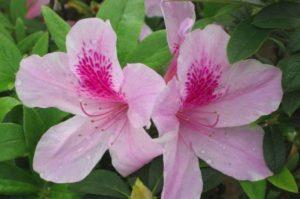Planting, growing and caring for calendula outdoors
Calendula is a beautiful and useful flower, so gardeners will always find a place on the site to plant it. Sun petals are great for border plantings, look great in rock gardens and on a Moorish lawn. Calendula is easy to plant in open ground and unassuming to care for. A rich selection of varieties allows you to build landscape compositions, harmoniously fit into any flower beds in the front gardens, and arrange flower lawns.
General information about the plant
Calendula is popularly called "marigolds", as the seeds of the plant resemble the claws of a predatory animal. Their leaves are pleasantly green with a silvery sheen. And the trunk is rectilinear, with soft sticky hairs, the leaves have a very different shape and are located in 2-3 rows on the stem.
The reed petals fold into a double, bright orange or yellow-red basket up to 7 centimeters in diameter. The herbaceous annual Calendula is small (curb) in size and reaches almost a meter.
Varieties and varieties
Since the beginning of cultivation, breeders have obtained a large number of varieties from the original natural species. Calendula officinalis - Officinalis and field calendula - Arvensis are especially popular.
There are undersized species in which the stem reaches 30 centimeters:
- Fiesta Gitana;
- Orange Gitana;
- Summer Symphony;
- Patio;
- Bonbon;
- Gold Koenig;
- Apricot pygmy;
- Calypso.
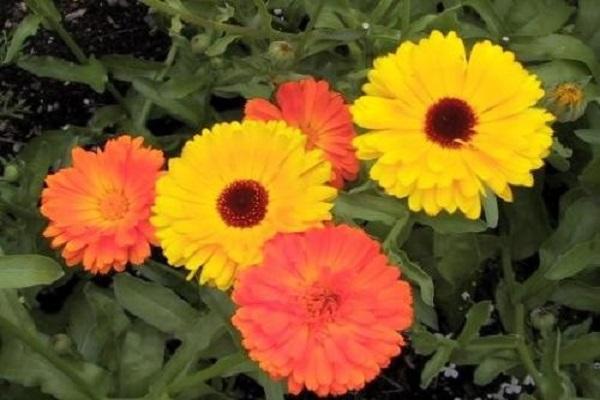
The list of medium-sized varieties includes:
- Apricot jam;
- Radio;
- Green heart;
- Sun of Egypt;
- Lemon juice;
- Geisha.
Tall varieties include:
- Kabluna Epricot;
- Beauty;
- Golden Emperor;
- Indian prince;
- Sunny sunset;
- Flames.
Many of these varieties have healing properties. And cut plants look great in containers, flowerpots, patios, pots, balconies and flower beds.

How to grow calendula
A correctly chosen planting site and the creation of normal conditions are the key to the successful cultivation of marigolds. It is also important to follow the planting dates.
Landing dates
It is recommended to sow marigolds directly into the ground. This can be done in the second half of spring, when the ground is warm and dry enough after snow. In this case, the soil can be checked whether it is ready for planting. Take a handful of earth and throw it hard from a meter height. If it decays, then you can start the process.
A proven way to get early flowering is by sowing some varieties of calendula before winter. The time is considered optimal when there will be persistent frosts at night, but the ground is not yet frozen enough.

Important: if you plant in a warm autumn, the plant will have time to ascend, which means that the coming frosts will destroy it. The dates may differ in different regions.
Preparation of planting material
The main task of gardeners is to prepare calendula for planting. The plant is not afraid of low temperatures and feels good at minus 5 degrees, so the seed can be planted directly into the ground.
It is recommended to start with a calibration. Separate damaged, empty and small seeds from large and whole ones. Prepare a water-salt solution and dip them there. A defective product will float to the surface, and suitable for sowing will fall to the bottom of the container.
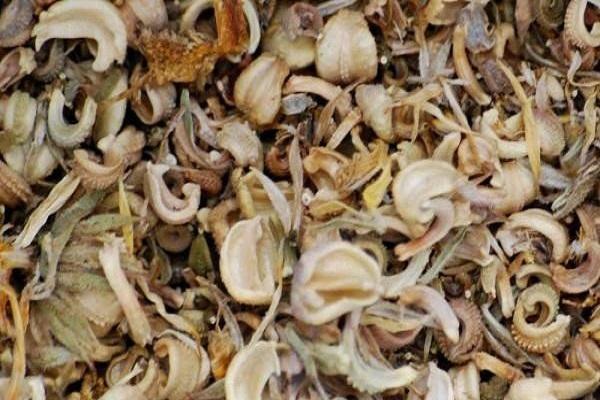
Pre-soaking will bring a good effect. Sprout a little in damp gauze or dip in water, which you change daily. And make sure that the material is always wet and does not dry out.
Site preparation
The plant is able to show all its beauty in sunny areas. If planted in the shade, then the trunks will stretch out at the marigolds, and the petals will be small. Having chosen the most lighted place, dig up the site and fertilize. To do this, take a tablespoon of compost, urea, fertilizers containing nitrogen, potassium, phosphorus.
After that, dig up the soil and level it with a rake. On such a fertile soil, marigolds can grow quietly for 5 years.
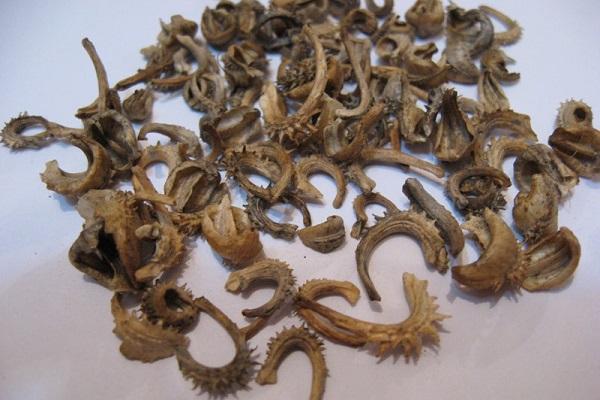
Planting process
Make grooves a couple of centimeters deep. The row spacing in the flower beds should be 30 centimeters, and in the flower beds - 10 centimeters. In a week you will already see the result.
Important: if necessary, thin out the plants when two full-fledged leaves appear, and transplant the marigolds to another place.
After the sprouts appear, mulch the area. For this, dry leaves, freshly cut grass, sawdust are well suited.
Plant care rules
If there is a desire for the calendula to please all summer, take proper care of it. Marigolds, like all plants, need to regularly provide watering, feeding and weeding.
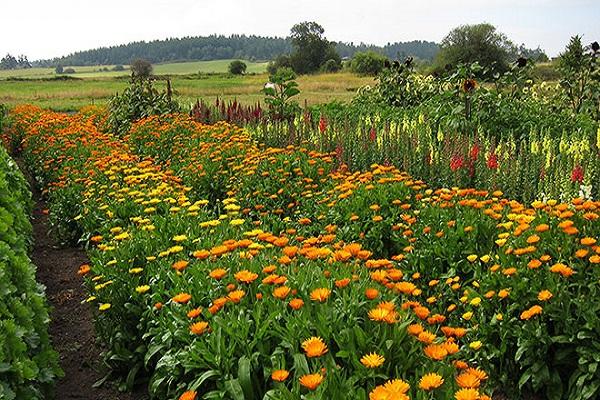
Watering
Marigolds are quite moisture-loving plants, so they cannot stand drought. But they do not like excessive moisture either. As soon as the first shoots appear, water it 3-4 times a week with warm water. When they are already strong, reduce watering. Adult plants need moisture only during dry periods.
The soil
After watering, a lot of weeds always grow around the plant. Therefore, pay attention to weeding. Also, plants need to be loosened at the same time. The process increases gas exchange in the upper soil layer, and the roots will begin to receive oxygen. In addition, after loosening, evaporation decreases, moisture is retained better.
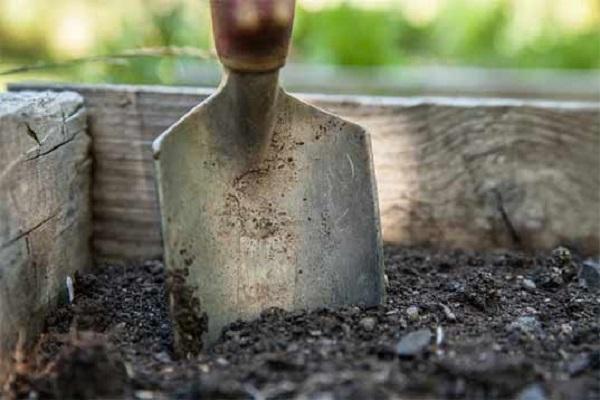
Fertilizing and feeding
Despite the fertilized soil, calendula needs additional feeding. The first time you feed the marigolds when two or three leaves have appeared. To do this, take half a kilogram of cow or chicken manure per bucket and add a large spoonful of complex mineral fertilizer.
If feeding is carried out with nitrogen fertilizers, be careful. Excessive use of it leads to a decrease in the size of the inflorescences. Organize the subsequent addition of fertilizer at the time of flowering.
Pruning
To improve flowering, it is recommended to remove faded inflorescences. Do this regularly throughout the summer. Constant pruning stimulates calendula to form new buds that will be much brighter and larger.
In the case when marigolds are grown for medicinal purposes, also regularly cut off the shoots.
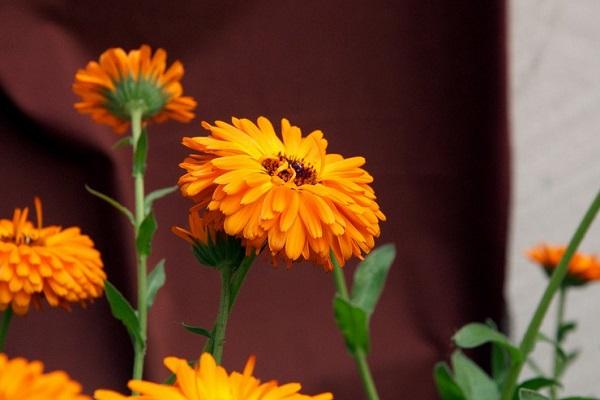
Preparing for winter
The beginning of winter is a challenging time for many plants. The most unfavorable moment is when the temperature has dropped significantly, and the snow has not yet fallen. If the marigold is annual, then it does not require any preparation for the winter. But there are perennial varieties. They need special care. Trim overgrown calendula shoots in late fall.
Treatment against diseases and pests
Marigolds are resistant to various diseases and pests. The greatest threat to be expected is from aphids. To destroy pests, plants are not only treated with special preparations, but the paths made by ants around the marigold are also destroyed. After all, it is ants that carry aphids, infecting calendula.
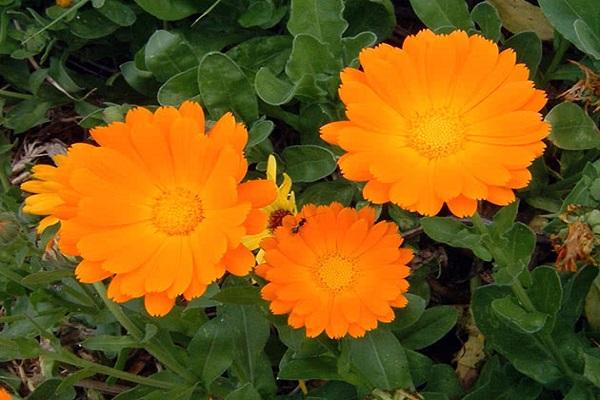
Sometimes dark spots are visible on the leaves. This is a sign of the fungal disease cercospora.
If a powdery bloom appears on the plant, then the marigolds get sick with powdery mildew. Systemic fungicides are the most effective disease control agents. Processing is carried out before the onset of flowering marigolds. Problems most often arise due to the frequent planting of calendula.
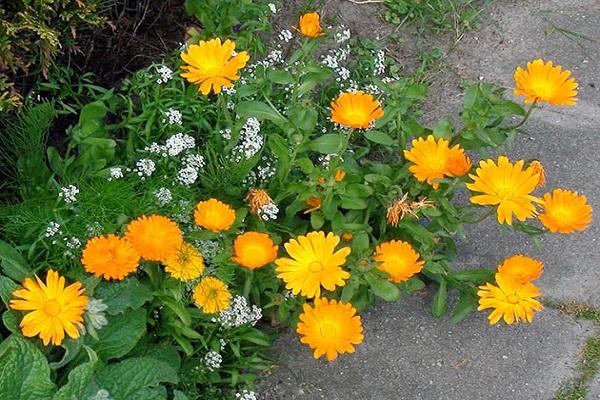
Breeding flowers
Calendula has gained its popularity due to its decorative and healing properties. Gardeners breed marigolds for many reasons:
- decorate a personal plot;
- make medicinal medicines;
- protect other plants from pests.
To prepare medicinal potions, use only blossoming inflorescences. Petals are used to treat many pathologies, since they have the following properties:
- wound healing;
- antispasmodic;
- bactericidal;
- sedative;
- fortifying;
- diaphoretic.
The plant is also bred for cosmetic purposes. Marigold infusions strengthen hair roots well, cleanse the face.
In addition, marigolds protect vegetables from the attack of caterpillars, ticks, Colorado beetles and other garden pests.
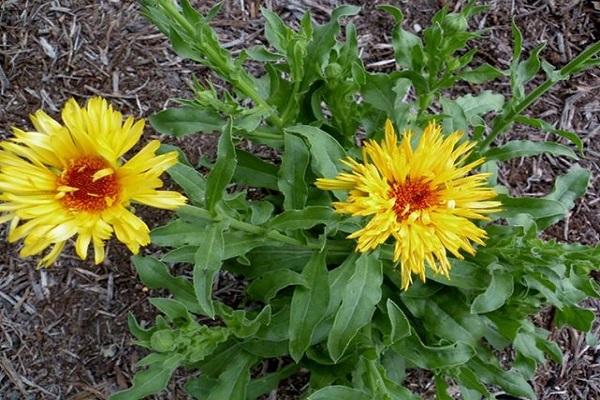
Combination of calendula with other plants
Landscape compositions with marigolds look exquisite and charming. They go well with other golden, red, orange flowering plants:
- poppies;
- asters;
- marigolds;
- rudbeckia.
Marigolds are suitable for decorating the lawn in the Moorish style, rock garden.

Will look bright surrounded by evergreen shrubs or against the background of dark-flowering plants:
- cornflowers;
- violets;
- sage;
- ageratums.
Low-growing varieties look spectacular in hanging baskets, flowerpots, pots.

Rules for the collection, drying and storage of calendula
Reproduction of marigolds takes place in a generative way. Therefore, to breed marigolds, collect the inflorescences as they bloom throughout the summer. Cut the buds in dry season to keep the petals from wilting and dry well. Then place them outdoors, but in the shade. It is recommended to turn them a couple of times to prevent spoilage.
Store dry marigolds in a cool place that is easily ventilated and free from increased humidity. Transfer the dry product to small canvas bags or paper bags - this way it will last longer.
Marigolds have won the recognition of gardeners because they bloom all summer long, multiply abundantly, are easy to care for and have a large number of useful properties. Plants will help in the fight against pests, replenish your home medicine cabinet and cosmetic bag, add an exquisite taste to food as a seasoning.

